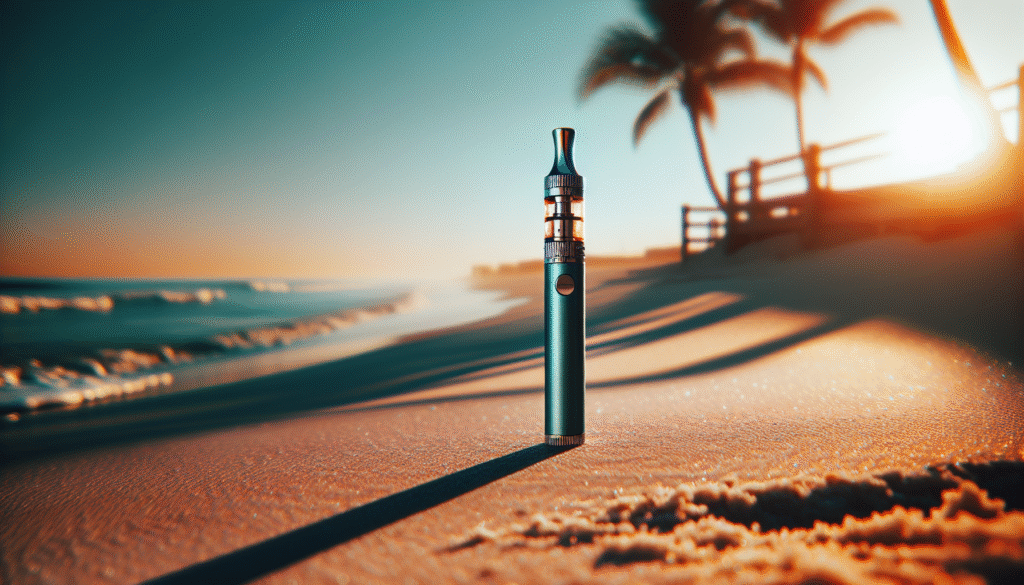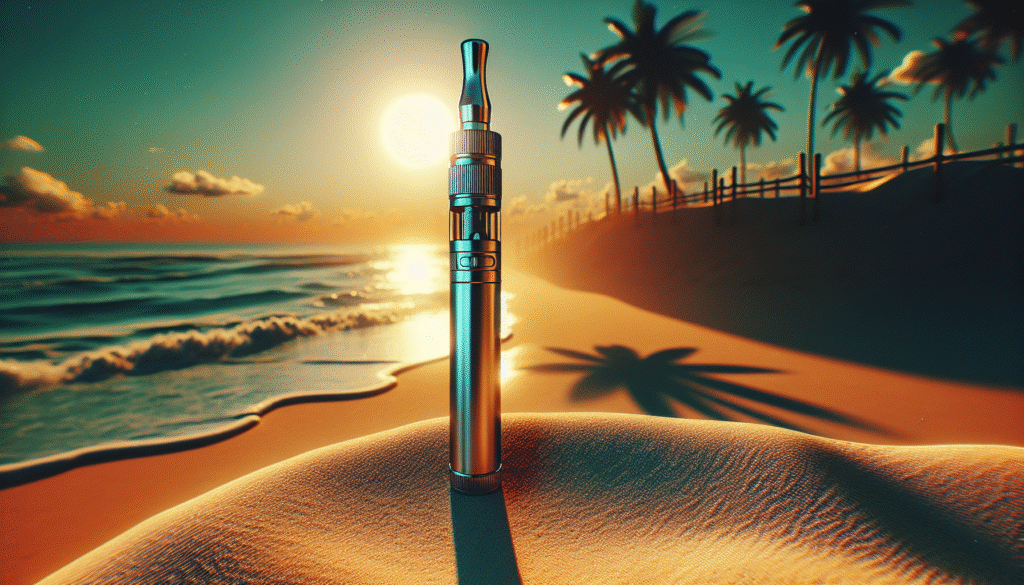Did you see the viral claim that a Florida man says he vaped semen and wondered what that actually means for your health or public conversation?
What happened and why it went viral
A social media post claimed that a man in Florida announced he was the first person to vaporize and inhale semen using a vape device, and the clip spread rapidly online. The claim sparked outrage, fascination, and a large number of comments, shares, and skeptical posts as people tried to understand whether this was real, dangerous, or simply attention-seeking.
Why this story triggers strong reactions
You’re confronted with a story that combines sex, technology, and social-media spectacle—ingredients known to get people talking. Many reactions are visceral because bodily fluids and inhalation touch on deep health, ethical, and social taboos.
What vaping means in this context
Vaping normally refers to heating a liquid or substance until it becomes an inhalable aerosol which you then breathe into your lungs. When someone claims to “vape” a bodily fluid, they are saying they converted that fluid into tiny airborne droplets or vapor and inhaled them, which raises immediate questions about safety and plausibility.
How vape devices work
Most personal vaporizers or e-cigarettes heat a liquid or material with a coil to generate an aerosol that you inhale; they do not require combustion in the way a cigarette does. Temperature control, device design, and the physical form of the substance (liquid vs. solid) determine whether something can be aerosolized effectively.
Temperatures and aerosol generation
Typical vaping coil temperatures range from roughly 150°C to 300°C (302°F to 572°F) depending on the device and settings, producing aerosolized droplets from e-liquids. You should know that the behavior of organic fluids when heated—whether they vaporize, decompose, or aerosolize—depends on their chemistry and interactions with device materials.
What semen is composed of
Semen is a complex biological fluid made up primarily of water, sperm cells, sugars (notably fructose), proteins and enzymes, salts, and small amounts of lipids. It also contains cells, cellular debris, and various bioactive molecules released by reproductive glands.
Biological and chemical components to note
You should be aware that semen contains proteins that denature when heated, enzymes that can break down biomolecules, and minor lipid fractions that may behave unpredictably when exposed to heat. These components make it chemically different from common e-liquids designed for vaping.
Is it physically possible to vaporize semen?
From a purely physical standpoint, you can aerosolize almost any liquid by heating or forcing it through an atomizer, but “vaporize” in the sense of creating a vapor of its constituent molecules (as opposed to droplets) is far less likely. If semen is introduced into a vape device, what you’ll most likely produce are airborne droplets or combustion/thermal-decomposition products rather than a true vapor of intact biological molecules.
What happens to seminal components when heated
Heating will cause proteins to denature, cells to rupture, and organic molecules to break down; sugars can caramelize or decompose, and lipids can oxidize and form volatile decomposition products. You should understand that these thermal reactions can create new chemicals that were not present in the original fluid.
Could inhaling aerosolized semen transmit infections?
Transmission risk depends on the pathogen, its presence in semen, and whether aerosolization or subsequent inhalation provides a viable route for infection. Many sexually transmitted infections (STIs) typically require mucosal contact, direct exchange of bodily fluids into mucosal surfaces, or blood exposure; inhalation is not a common transmission route for most STIs. However, you must not assume zero risk—there are potential risks from bacteria, viruses, or other pathogens if they survive processing and retain infectivity.
Specific pathogens and airborne risk
HIV is not known to transmit via inhalation of aerosols; it’s fragile in the environment and requires direct access to bloodstream or mucous membranes. Hepatitis B and some other viruses can be more robust in certain environments, but airborne transmission from aerosolized semen is not the established route. For pathogens such as cytomegalovirus (CMV) and others that can be shed in bodily fluids, the degree of risk is uncertain because aerosol-mediated transmission from semen has not been well studied.
Chemical hazards from heating organic bodily fluids
Heating biological material generates a variety of volatile compounds you may not want to inhale. When lipids are heated or oxidized they can produce aldehydes and acids; sugars can break down into reactive carbonyls, and proteins can generate amines and other potentially irritating nitrogenous compounds. Many of these compounds are known to be harmful to the respiratory tract in other contexts.
Known inhalation risks with vaping and what they suggest
You already know that conventional vaping of e-liquids can produce toxicants like formaldehyde, acetaldehyde, and acrolein when glycerol or propylene glycol are overheated. If you heat a complex biological fluid, you risk producing a similarly unpredictable mix of irritants, oxidized lipids, and protein fragments that may inflame the lung or cause allergic reactions.

Lipoid pneumonia and oily substances
Lipoid pneumonia is a recognized lung condition that can follow aspiration or inhalation of oils and lipid-containing substances. Seminal plasma contains some lipid components; inhalation of lipid-rich aerosol droplets or oil-like contaminants could theoretically increase the risk of lipoid pneumonia. You should treat this as a plausible risk, even if no specific case reports exist for semen inhalation.
Allergic and inflammatory responses
Inhaling foreign proteins and biological molecules can provoke allergic or inflammatory responses in sensitive individuals. If you’re exposed to aerosolized proteins that your immune system sees as foreign, you could experience coughing, wheezing, chest tightness, or more severe hypersensitivity reactions.
Device contamination and bacterial growth
Shared or improperly cleaned vape devices can become reservoirs for bacteria or fungi. If semen or other bodily fluids are introduced to a device, residual organic matter can support microbial growth, potentially leading to inhalation of opportunistic pathogens. You should be cautious with device hygiene and never share devices that have been exposed to bodily fluids.
Scientific literature and lack of precedent
As of now, there are no peer-reviewed studies documenting inhalation of aerosolized semen as a practiced or studied behavior in medical literature. That absence doesn’t prove safety; it means the act is not documented, studied, or validated, leaving you with significant uncertainty about risk.
How scientific evaluation would proceed
If this behavior were to be scientifically assessed, researchers would analyze the aerosol chemistry using gas chromatography–mass spectrometry (GC-MS), test for viable pathogens in generated aerosols, and evaluate respiratory outcomes in controlled exposure studies. You would expect such studies to be handled with ethics review and biosafety precautions.
Social media dynamics: why claims like this spread
Social networks amplify the unusual and sensational because those items attract clicks, comments, and shares. When something shocks or disgusts, it provokes rapid engagement; you should therefore consider whether the claim is evidence-based or primarily designed to generate attention.
The “Florida Man” meme and cultural context
The term “Florida Man” has become shorthand for odd or headline-grabbing behavior originating from Florida in news cycles. That meme frames the story as humorous or absurd, which can overshadow legitimate health and ethical concerns you might want to consider.
Consent, ethics, and legality
If any shared content involves others, or if minors could be implicated, legal and ethical issues arise that you should not ignore. Even if an act is consensual between adults, dissemination without consent can have legal implications. If minors were involved, you should recognize potential criminal concerns and consider appropriate reporting channels.
Claims versus evidence: how to evaluate what you see online
You can ask simple questions to test a sensational claim: Is there verifiable evidence (video without editing, timestamps, independent witnesses)? Has anyone with relevant expertise weighed in? Is there an analysis of the device and substance used? Without such corroboration, treat sensational claims with skepticism.
Practical steps to verify a viral claim
Look for lab tests showing biological material in aerosols, independent confirmation, or institutional statements (e.g., health departments, medical centers). You can also check for retractions or clarifying statements from the original poster. If none of this exists, it’s safe to consider the claim unverified.
What public health or medical experts would likely say
Medical professionals would probably caution against any inhalation of bodily fluids and emphasize the unknown risks. Pulmonologists would warn about lung inflammation and infection, infectious disease specialists would discuss pathogen-specific risks and limited evidence for airborne transmission via semen, and toxicologists would highlight the potential for harmful thermal decomposition products.

Harm reduction: What you should do if you’re curious or considering this
The simplest and clearest harm-reduction message is: don’t vape bodily fluids. If you’re curious about sensations or novelty, choose safer, non-biological alternatives and avoid introducing biological materials into devices designed for inhalation. You should never expose others to bodily fluids without their explicit consent.
Safer alternatives to risky experimentation
If you want novelty experiences, consider items specifically formulated and tested for inhalation (e-liquids from reputable manufacturers) and use devices as intended by their manufacturers. Maintain device hygiene, avoid sharing mouthpieces, and follow safety guidelines for temperature and coil maintenance.
If you were exposed accidentally or intentionally: immediate steps
If you inhale an aerosol that you suspect contained semen or another bodily fluid, stop exposure immediately and clean your mouth and face. If you develop symptoms—persistent coughing, wheezing, shortness of breath, fever, or chest pain—seek medical care promptly and tell clinicians about the exposure so they can order appropriate tests.
Testing and follow-up you might need
You may be advised to undergo testing for respiratory pathogens and for common bloodborne infections if there is concern about exposure risk. A clinician may also evaluate you for chemical pneumonitis or allergic reactions based on your symptoms.
Potential long-term consequences and unknowns
Because there are no documented studies, long-term outcomes from a single exposure are uncertain. Repeated exposures that introduce degraded organic compounds to the lungs could increase risk of chronic inflammation, infection, or other pulmonary issues; you should treat repeated inhalation of biological aerosols as risky.
Legal steps and reporting
If the claim involves potential nonconsensual acts, exploitation, or minors, you should report it to the platform hosting the content and, if appropriate, to local authorities or child-protective services. For general public-health concerns, local health departments may be able to advise, especially if exposure could plausibly lead to disease spread.
Social etiquette and interpersonal fallout
If friends or acquaintances post or brag about behaviors that make you uncomfortable, you can set boundaries and refuse participation. You should also be mindful of how sharing or amplifying sensational content can affect individuals involved, their privacy, and their future.
Media literacy: how to avoid falling for sensational claims
Look for primary sources, corroboration, and expert commentary. You should also recognize clickbait patterns and understand that headlines are often designed to stimulate strong emotions rather than provide nuanced information.
How platforms typically respond to this kind of content
Social platforms have community standards regarding sexual content, medical misinformation, and content that promotes risky or harmful behavior; such posts may be removed or flagged. If the post contradicts medical consensus or encourages unsafe practices, platforms may label or take down the content.
If you want to discuss it online responsibly
When you comment or share, try to add accurate context and avoid amplifying unverified, sensational claims. You can point people to credible resources about vaping risks, infectious disease transmission, and lung health.
Table — Risks, likelihood, evidence level, and recommended actions
| Risk category | Likelihood (based on current evidence) | Evidence strength | Potential outcome | Recommended action |
|---|---|---|---|---|
| Infection transmission via inhalation | Low to uncertain | Low (no direct studies) | Possible localized infection if viable pathogen present | Seek medical testing if exposed; consult ID specialist |
| Chemical toxicity from thermal breakdown | Moderate | Moderate (analogous to known vaping chemistry) | Lung irritation, bronchitis, chemical pneumonitis | Avoid inhaling biologicals; seek care for symptoms |
| Lipoid pneumonia | Low to moderate (if lipid content aerosolized) | Low (theoretical) | Respiratory compromise, cough, infiltrates on imaging | Avoid exposure; medical evaluation if symptomatic |
| Allergic/hypersensitivity reactions | Variable | Low-moderate (based on protein exposure) | Wheeze, cough, allergic inflammation | Stop exposure; antihistamines/steroids as advised by clinician |
| Device contamination & secondary infection | Moderate | Moderate | Bacterial/fungal infection from contaminated device | Clean and disinfect devices; do not share |
| Social/legal consequences | Moderate-high | High | Privacy violation, legal investigation if minors/ nonconsensual acts | Report abuse; seek legal counsel if implicated |
Why sensational claims are not scientific proof
A social-media video or post is anecdotal by nature and usually lacks controls, verification, or reproducibility. Scientific proof would require independent testing, methodical study, and dissemination through peer review; you should therefore treat online claims as hypotheses, not facts.
What you can tell friends who are amused or shocked
You can explain that while the claim is attention-grabbing, the health risks are uncertain and potentially serious; encourage common-sense caution and avoidance of inhaling biological materials. Suggest that people prioritize proven safety measures and consult health professionals rather than trying risky stunts.
If you’re a health professional: how to respond in public health terms
You might communicate clear, nonjudgmental messages about the unknowns, advise against the practice, offer guidance for exposure follow-up, and use the event as a teachable moment about vaping risks and infection prevention. Public health messaging should center on harm reduction and accurate information.
Broader lessons about risk-taking and online behavior
This story is a reminder that novelty-seeking can collide with biological realities, and social media rewards sensationalism. You should think critically before trying or sharing risky behaviors, and prioritize consent, safety, and scientifically grounded advice.
Final summary and practical takeaway
The viral claim that a Florida man vaped semen raises many unanswered questions about safety, infectious risk, and chemical exposure. Because there is no peer-reviewed research documenting this practice, you should assume risk and avoid inhaling bodily fluids, seek medical attention for any concerning exposure, and practice caution when interpreting sensational social-media claims.
If you want further information on the respiratory effects of vaping, infectious disease transmission, or how to evaluate online health claims, let me know what specific angle you’d like to examine and I’ll point you to reputable resources or summarize the scientific literature.
